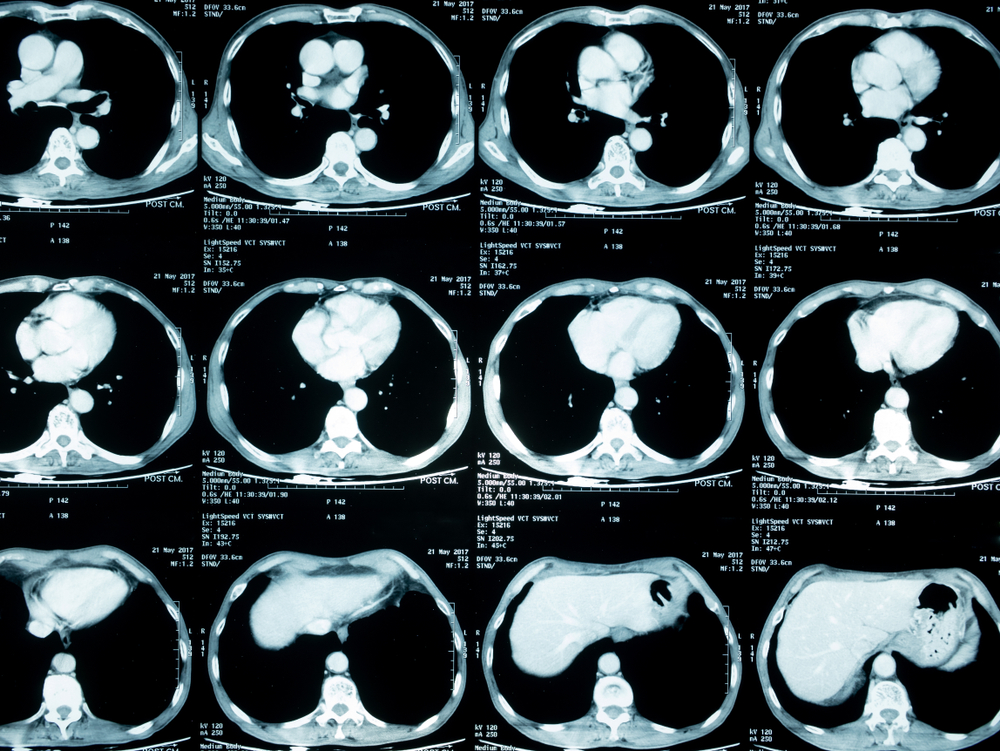Only 5.8% of People Eligible Receive Lung Cancer Screening

The American Lung Association’s 5th annual “State of Lung Cancer” revealed that only 5.8% of the Americans eligible for low-dose CT lung cancer screening had been screened. The US Preventive Services Task Force guidelines recommendations are:
- Have a 20-pack-year history (1 pack/day for 20 years, 2 packs/day for 10 years)
- Are a current smoker or have quit within the last 15 years
- Are between the ages of 50 and 80
14.2 million Americans qualify for lung cancer screening under the USPSTF guidelines. When detected before it has spread, lung cancer screening improves one’s chances of surviving for 5 years or more by about 60%. Yet, just under 825,000 were screened in 2021. Screening rates varied significantly — Nevada and California had the lowest rates, at 1.0% and 1.3%, respectively, and Massachusetts saw the highest screening rate at 16.3%.
Just under 237,000 people will be diagnosed with lung cancer in 2022, and about 130,000 deaths will result from lung cancer. These significant trends were reported in the 2022 “State of Lung Cancer” report.
Early Diagnosis. Only about one-quarter of patients are diagnosed with early-stage lung cancer, with a five-year survival rate of 61%. Lung cancer is frequently diagnosed in later stages because often there are very few symptoms until it has spread.
Health Disparities. People of color diagnosed with lung cancer experience poorer outcomes when compared to white Americans — diagnosed at later stages, more unlikely to receive surgical treatment, more likely to receive no treatment — causing a lower survival rate.
Lack of Treatment. 20.6% of those diagnosed with lung cancer nationwide receive no treatment. We may not know why some patients don’t receive treatment, but these are some of the reasons that result in patients not receiving treatment:
- Patient knowledge
- Lack of provider
- Stigma related to lung cancer
- Treatment costs
- Fatalism after receiving the diagnosis
Lung Cancer Screening. Deaths from lung cancer could be reduced by 20% if people at high risk for lung cancer received annual low-dose CT scans. Screen rates vary significantly by state — just 1% in California up to 16.3% in Massachusetts.
Medicaid Coverage. While most healthcare payers must pay for lung cancer screening in high-risk persons, Medicaid’s fee-for-service state programs do not have that requirement. The American Lung Association found that three states do not provide coverage, and another did not provide information on lung cancer screenings.
Surgery as First Course of Treatment. When diagnosed at earlier states, surgery is often the treatment of choice. However, only 20.8% received surgery nationwide.
Survival Rate. 44% of all lung cancer cases in the US aren’t diagnosed until the patient is Stage IV, where the 5-year survival rate drops to 7%. And unfortunately, lung cancer, as a whole, has one of the lowest five-year survival rates — just 25%.
Harold Wimmer, National President and CEO of the American Lung Association, added, “While lung cancer screening remains underutilized, our new report revealed continued progress for lung cancer survival. The lung cancer five-year survival rate is now 25% and increased by 21% from 2014 to 2018.
“Increased lung cancer survival is attributable to advancements in research, better treatments, and other factors; however, lung cancer screening is the most immediate opportunity we have to save lives,” concluded the ALA CEO.